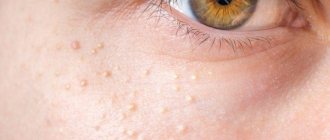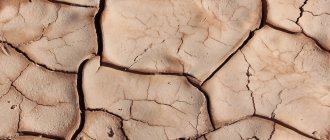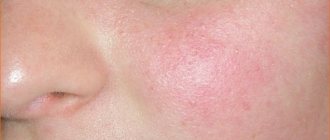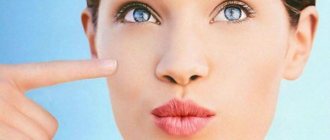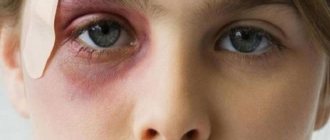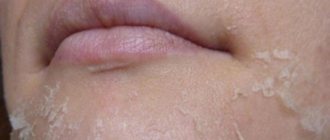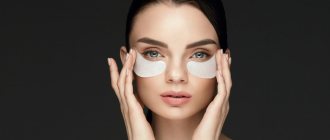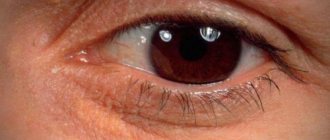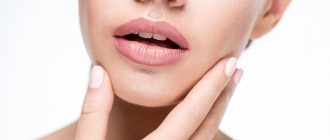Quite common nowadays are questions about why yellow spots appear on the human body and what they may indicate. That is why we will now try to understand this in more detail.
A person’s skin is considered a mirror of his health, because a considerable number of diseases and pathological processes are manifested by changes in his condition. Most often, various spots appear on the skin. In this case, it is recommended to seek help from a doctor as soon as possible, because only he can determine the exact cause of their appearance and prescribe adequate treatment.
Causes and symptoms
Yellow skin formations can be a sign of dangerous pathologies or a consequence of the adverse effects of external factors on the body
| Disease | Description | Symptoms |
| Mastocytosis (urticaria pigmentosa) | Mast cells, a special form of white blood cells, accumulate in the skin. They interact with melanocyte cells. Pale brown pigment accumulates in the lower layer of the epidermis. | Yellow-brown formations appear on the body, the surface of which is uneven and dense. The rash spreads symmetrically throughout the body, without affecting the skin of the palms, feet, and head. The spots look like freckles or extensive papules, plaques or nodules. As the disease progresses, the mucous membranes are affected, and the affected skin itches and itches. Associated symptoms are headache, dizziness, high blood pressure, abdominal pain, accompanied by nausea, vomiting, diarrhea, and gastric ulcer. Changes occur at the psychological level: the patient becomes irritated and concentration is impaired. |
| Lichen versicolor (pityriasis versicolor) | A chronic skin disease caused by yeast-like fungi. The stratum corneum of the skin is affected. | Yellow, light brown, pink and red formations up to 1 cm in diameter damage the epidermis in different parts of the body. First, a light yellow, rough spot appears, with minor itching and redness possible. Over time, the spots can merge, forming extensive lesions up to 20 cm in diameter. Infection occurs through household means and is more common among young people. Exacerbation occurs after prolonged exposure to direct sunlight. |
| Pigmented nevus | Cellular nevus is a congenital pigmentation due to the accumulation of melanin pigment in the skin cells. | A benign neoplasm that often occurs in people of any age. The color of the pigment spot ranges from light yellow to brown-black. A distinctive feature of a pigmented cutaneous nevus is its appearance: flat shape, raised above the surface of the skin. Nevi can be of various sizes and localized on any part of the body. They are often located on the scalp, face, and under the arms. |
| Xanthomatosis | A disease associated with disruption of lipid metabolism in the body. Pigmentation usually appears in old age and is associated with age-related changes. | Small spots on the body that tend to merge. Xanthomas are localized on any part of the body, affecting the eyelids and inner corners of the eyes. In medicine, it is customary to classify formations and distinguish several types:
|
| Psoriasis (scaly lichen) | Non-infectious skin lesions of autoimmune etiology | A rash appears in the form of pinkish papules, which over time acquire a yellowish tint and become dry. |
Types of pigmentation
The epidermis contains a special substance responsible for skin color - melanin. But under the influence of certain factors, its amount may increase, leading to the appearance of spots. There are several varieties of them.
- Freckles are more common in people with fair skin types. These are harmless small pigmented formations with clear outlines. They can be multiple or single. From long exposure to the sun, they acquire a brighter color and become clearly visible.
- Nevi (moles) are small spots on the face that have relatively clear and even boundaries. There are two types: congenital and acquired. They are present in most people and are the norm, except in cases where they degenerate (malignize) into malignant formations.
- Chloasma (melasma) are larger pigment spots that do not have the correct shape and clear outlines. An increase in their size due to merging with each other is often observed.
- Lentigo is a pigmentation that appears in older people. These are yellow or light brown pigmented formations that appear on the face, hands, and neck. They arise from excessive exposure to ultraviolet radiation on the skin.
Any pigment formation is primarily a cosmetic defect. Women are especially susceptible to their appearance. They want to remove them quickly and efficiently. But it's not that simple. To get rid of stains, it is important to find out the reasons for their appearance.
Other reasons
Yellow papules on the body can be one of the signs of diseases of the internal organs:
- liver and kidneys (hepatitis, liver cirrhosis);
- systemic diseases (diabetes mellitus, lupus erythematosus, Addison's disease);
- cardiovascular (including when the integrity of blood vessels is violated);
- dermatological pathologies (eczema, dermatitis);
- malignant neoplasms;
- disturbances in the emotional and mental state (yellow and red spots form under the skin);
- changes in hormonal levels (especially during pregnancy and menopause);
- allergic reaction.
In these cases, along with pigmentation, characteristic symptoms of the underlying disease appear.
External effects on the human body (traumatic injury, weather conditions, insect bites, burns) can lead to skin pigmentation. If you look at a photo of a person who has been abusing smoking for many years, you will see that his skin has a yellowish tint. Yellow spots appear on the hands as if from iodine.
Etiology
The appearance of yellow spots on the body may be due to the following etiological factors:
- pathological changes in the liver;
- hormonal disorders, in particular Addison's disease;
- using cosmetics that are not suitable for your skin type;
- allergic reactions;
- oncological diseases;
- lipid metabolism disorder;
- diabetes;
- some systemic diseases;
- dermatological diseases.
We should separately highlight the reasons for the manifestation of this symptom on the skin of a newborn baby:
- meconium entering the amniotic fluid before the birth of the child;
- systemic pathologies;
- infectious diseases.
If you have such a symptom, regardless of additional symptoms, you should consult a doctor and not self-medicate. The use of drugs or traditional medicine at your own discretion can lead not only to the development of complications, but also to a blurred clinical picture, which will complicate diagnosis.
Diagnostics
During diagnosis, the etiology of the disease is determined and its root cause is established. Based on an external examination, the current clinical picture, and the patient’s complaints, the doctor makes a preliminary diagnosis, which is verified as a result of laboratory and instrumental examination methods:
- general urine and blood tests;
- detailed biochemical blood test;
- measuring blood sugar levels;
- tests for tumor markers;
- Ultrasound of internal organs;
- MRI, CT;
- immunological research;
- gastroenterological examination.
Based on the results obtained, the doctor can determine what kind of rash it is and make an accurate diagnosis to prescribe a course of treatment.
Symptoms
With the development of this disease, symptoms do not take long to appear. A pink and yellow spot like iodine begins to appear on the leg. The surface may peel off, and the diameter of the spots reaches up to five centimeters.
In the area of the rash, you may feel slight discomfort, itching and burning will occur, as a rule, there are no other complaints. Body temperature may rise, but this phenomenon is temporary.
Yellow spots on the fingers or toes do not need to be scratched, no matter how much you want to. Otherwise, an infection may enter the wound and even greater complications will begin.
A week later, yellow spots appear on the soles of the feet, as well as all over the body; they may have a slightly pink tint. In the center of the spots you can observe slight peeling; in appearance it is somewhat similar to a medallion.
Over a few weeks, the rashes begin to dry out, then they begin to develop back. The skin is completely cleansed. In general, the disease lasts about nine weeks, and even without active treatment, symptoms will subside. Moreover, future relapses are extremely rare.
Features of treatment
There is no single method for getting rid of yellow spots on the body. The choice of treatment tactics depends on the cause of pigmentation. The therapy uses medications (antifungal, anti-inflammatory, anti-allergenic), and remedies prepared according to folk recipes. Peeling care, phototherapy, and treatment using laser technologies are practiced.
Preventing the appearance of pigment spots on the skin
- Every day, even on cloudy days, use products with a high UV protection factor to avoid high melanin production and the appearance of age spots from the sun. To protect against ultraviolet radiation in an urban environment, products with SPF-25/30 are suitable; for a beach holiday, choose products with SPF-50
. - Do not squeeze pimples or touch inflamed areas of the skin with your hands: with age, the ability of the epidermis to self-regenerate decreases and stagnant spots may remain at the site of inflammation.
- You should not be overzealous with the use of aggressive agents, for example, harsh and chemical exfoliants, alcohol-containing products, which damage and dry the epidermis, slowing down cell renewal.
- To care for mature skin, use products with antioxidants that prevent oxidative stress of the skin and premature aging at 35 years old - such products serve as a good prevention of the occurrence of not only pigmentation, but also wrinkles.
- After lightening aesthetic procedures, peelings or facial hair removal, for example, pigment spots or irritation may appear under the nose. To prevent their occurrence, use Cicaplast Baume B5 SPF 50
- a restorative, soothing facial treatment that prevents the appearance of age spots, soothes the skin and reduces inflammation.
Prevention
There are no specific prevention methods. To minimize the risk of yellow spots forming on the body, you need to follow simple recommendations.
If the appearance of pigmentation on the body is associated with external influences on the skin, situations of direct sun exposure should be avoided:
- avoid prolonged exposure to the sun in the open air;
- use sunscreens with the appropriate degree of protection;
- stop smoking and drinking alcoholic beverages.
If yellow spots are a consequence of the development of a pathological process in the body associated with dysfunction of any organ, you need to pay attention to the following factors:
- dietary regimen – for diseases of the gastrointestinal tract;
- elimination of the allergen – in case of allergic nature of pigmentation;
- maintaining body hygiene.
How to get rid of age spots on the face using cosmetics?
If you find yourself with pigmentation, the first thing you should do is to include sunscreens in your beauty routine that reduce the transport of new melanin into cells and lightening cosmetics. La Roche-Posay expert dermatovenerologist Alexander Prokofiev tells how to get rid of age spots on the face and how to treat them at home.
Corrective care against age spots
Whitening creams will help remove age spots if used regularly, and will also prevent the occurrence of new darkening of the skin.
It is not possible to completely get rid of strong pigmentation with the help of cosmetics, but lightening products with acids and retinoids will help to noticeably even out the complexion. Alexander Prokofiev: Dermatovenereologist La Roche-Posay
Lightening cosmetics will help:
- Reduce the contrast of visible dark pigment spots on the face, neck and hands.
- Minimize stain size.
- Prevent the emergence of new and darkening of existing imperfections.
Types of anti-pigmentation cosmetics:
- The creams
are suitable for daily use and, with prolonged use, correct stains and prevent the appearance of new ones. - Serums
are distinguished by a high concentration of active substances and have an intensive effect on dark areas of the skin, brightening them. - Masks
are an emergency method that will help quickly lighten your skin and even out your complexion.
Composition of brightening cosmetics for the face
1. Retinoids (vitamin A derivatives)
accelerate the process of regeneration of skin cells, help fight even traces of post-acne and persistent age-related pigmentation.
- Concentrated anti-aging care Redermic [R]
with retinol lightens age spots on the face, smooths out even pronounced wrinkles and evens out complexion.
2. Vitamin C (ascorbic acid)
– another component that promotes epidermal renewal and accelerates collagen synthesis. Vitamin C helps skin cells fight free radicals and prevent oxidative stress. Cosmetics high in vitamin C will help remove age spots on the face.
- Antioxidant skin renewal serum Vitamin C10
with high concentrations of vitamin C fights all signs of aging, evens out the tone and texture of the face, and is suitable for the care of sensitive skin. - Intensive anti-aging care Redermic C10
with pure vitamin C (10% of the composition) and hyaluronic acid restores skin elasticity, natural radiance, effectively fights wrinkles and pigmentation.
3. Arbutin
slows down melanin synthesis and is known for its pronounced lightening properties.
4. Acids (glycolic, lactic, malic, kojic, azelaic)
accelerate skin renewal and whiten pigmentation well.
- Corrective cream-gel
for problem skin against imperfections and post-acne Effaclar Duo(+) with lipo-hydroxy acid + salicylic acid has a gentle exfoliating effect and promotes skin regeneration.
5. Glabridin
not only lightens pigmentation, but also has an anti-inflammatory effect.
